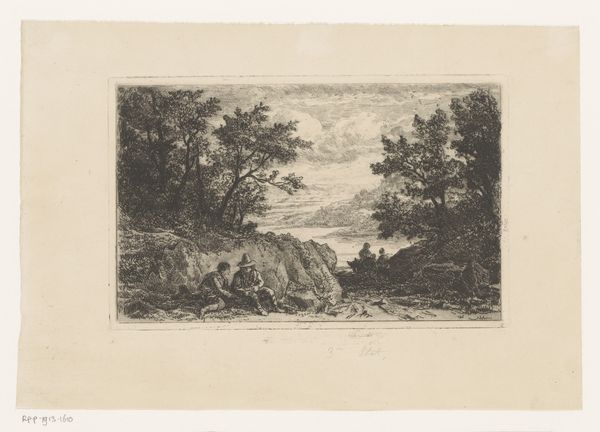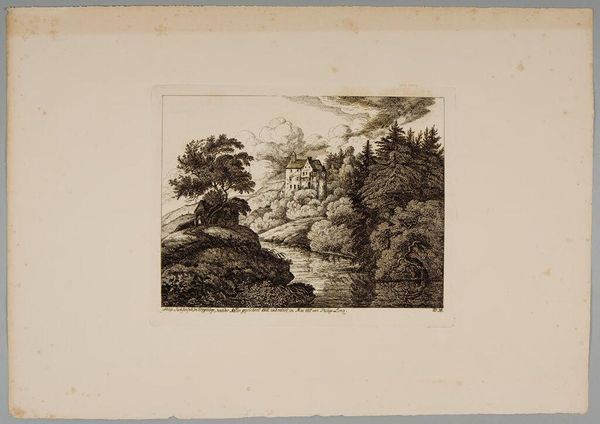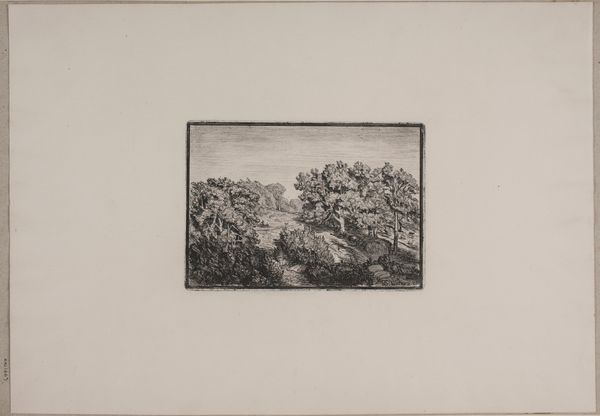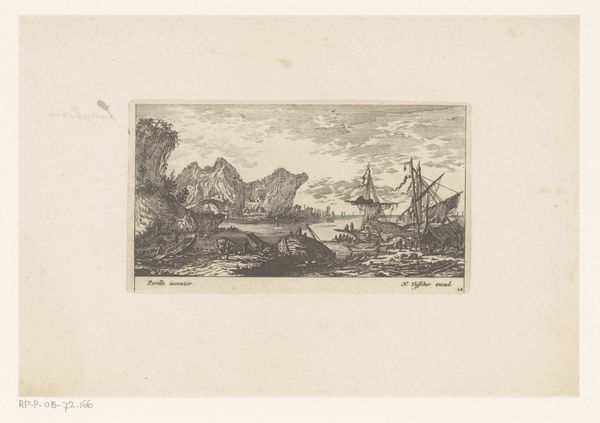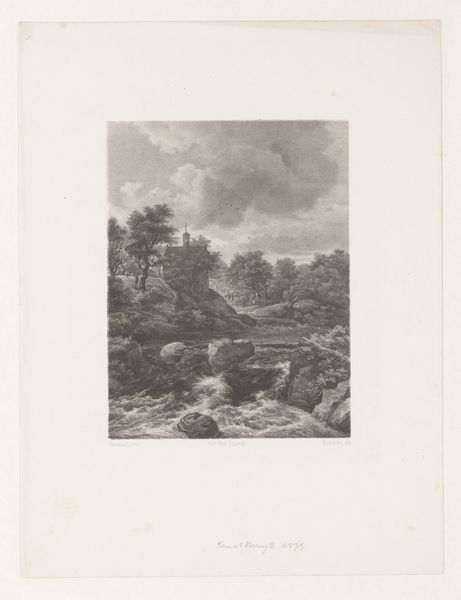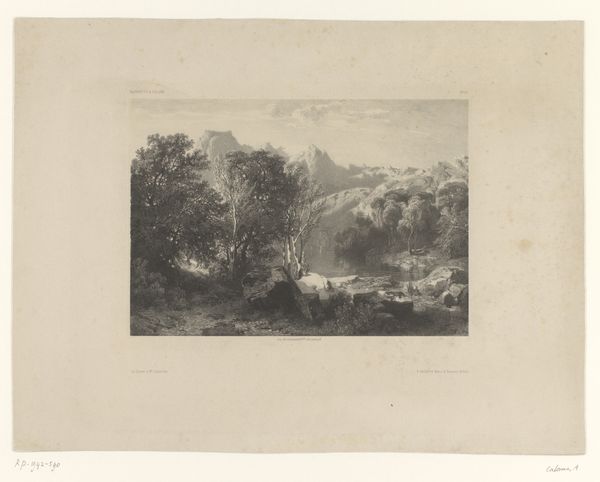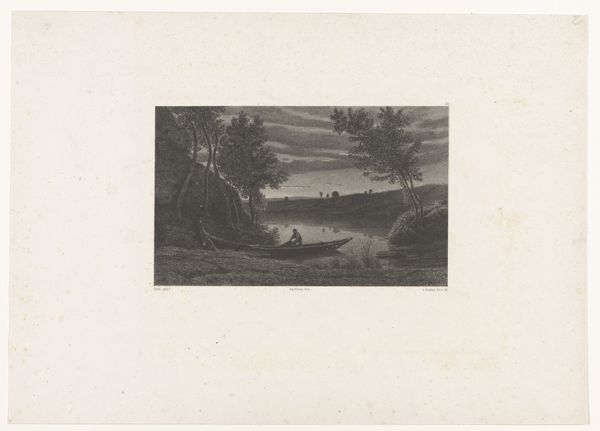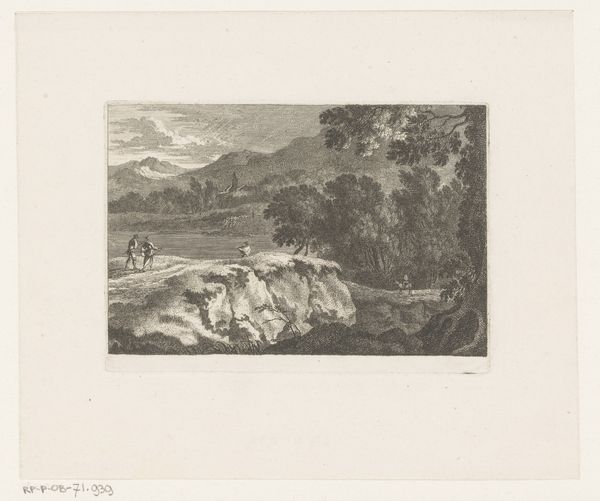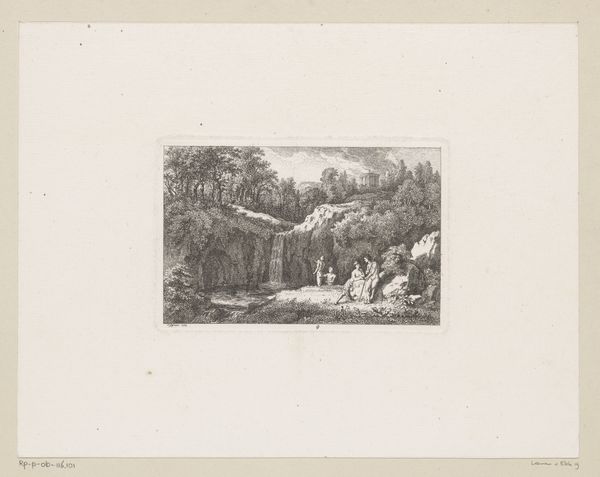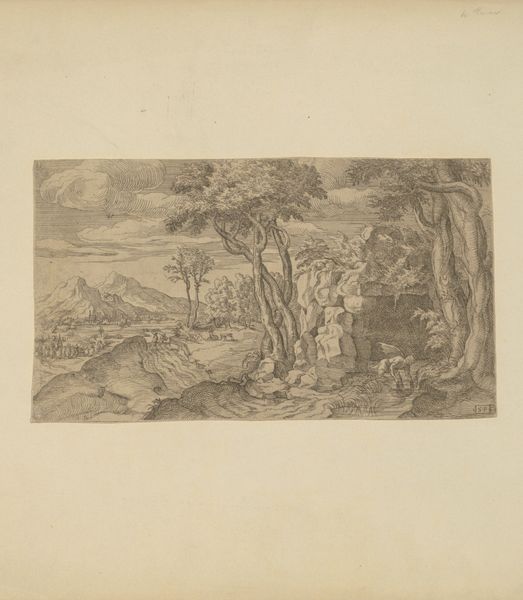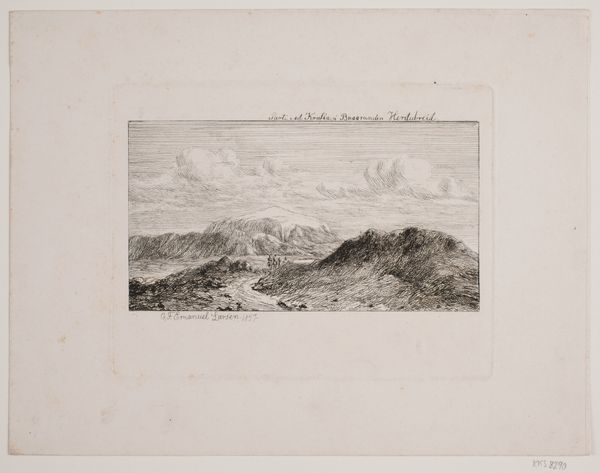
Dimensions: 97 × 180 mm (image); 108 × 193 mm (chine); 134 × 210 mm (plate); 272 × 360 mm (sheet)
Copyright: Public Domain
Curator: I find Rodolphe Bresdin's 1868 etching, "The Distant City," utterly captivating in its romantic desolation. Editor: My first impression is one of stark contrasts and a tangible loneliness. The intricate details seem almost frantic, and yet, there’s an undeniable peace evoked by the subdued palette and idyllic setting. Curator: Indeed. Bresdin, who lived in abject poverty much of his life, presents us here with a symbolic dichotomy, a visual argument really, about civilization versus nature, wealth versus poverty. Note how the 'distant city' shimmers with an almost illusory promise beyond this rugged, overgrown landscape. He critiques modernity’s relentless march. Editor: The imagery seems intentionally layered. We have craggy rock formations that rise asymmetrically, perhaps hinting at societal imbalances, the wild grasses suggestive of untamed spaces and wild thought, all brought into relief by this city, itself perched high up on the horizon like a visual representation of aspiration or even oppression. And water, the constant flow. Curator: Absolutely, and water is critical here as a signifier! Bresdin's frequent use of water evokes cleansing and renewal but, considering his fraught relationship with the elite art world, it is possible the waterway might instead represent distance, loss, an unbridgeable chasm between worlds. Editor: Considering his background, do you see a potential religious underpinning to these artistic choices? After all, during the Romantic period, the exploration of the sublime was very closely aligned with spiritual seeking. Curator: Yes! Bresdin was known for a somewhat eccentric form of spirituality. And given the meticulous detail in the landscape, it functions almost like a devotional miniature painting. It becomes a contemplation on nature's sacredness, implicitly questioning the values of the 'distant city' on the horizon, a society he both longed for and resented. I think he critiques capitalism's alienating effect here. Editor: What remains striking, after a long gaze, is that even amidst all that visual information, the mood sustains an even keel; tranquil and evocative simultaneously. Perhaps the real "distant city" is more of a state of mind? Curator: Yes. I agree. It is in that enduring juxtaposition, perhaps, where the power and continuing relevance of Bresdin’s vision ultimately reside.
Comments
No comments
Be the first to comment and join the conversation on the ultimate creative platform.

